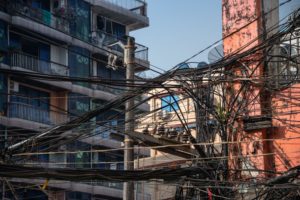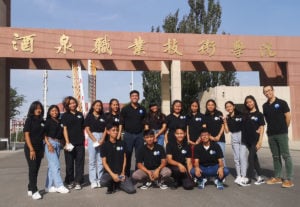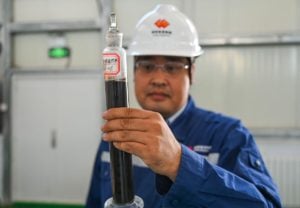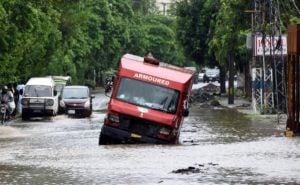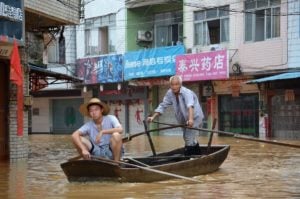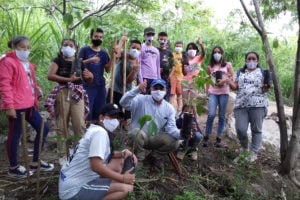Though Myanmar’s per capita greenhouse gas emissions are relatively low – 113th out of 191 countries – in 2021 its government committed to reducing national emissions by at least 244 million tonnes of CO2 equivalent (CO2e) in 2021-2030. For context, in 2021 alone, the US emitted 5.5 billion tonnes of CO2e. Fast-forward to the present day, however, and a military takeover has set back the achievement of this and other climate goals.
In February 2021, Myanmar’s National League of Democracy (NLD) government was overthrown in a military coup. The country has since witnessed three years of turmoil and bloodshed as resistant forces push back.
Amid this tumult, plans for large-scale solar projects, initiatives to train environmental leaders, and efforts to protect natural resources, have all been shelved.
Some experts believe that national attempts to achieve an energy transition away from fossil fuels, and other climate goals, have all but evaporated.
This is despite Myanmar ranking second for countries most vulnerable to extreme weather events in the 16th annual Global Climate Risk Index.
“Projects have been stalled, if they’ve not been completely cancelled,” says Helene Maria Kyed, a senior researcher at the Danish Institute for International Studies. “The whole sphere around environmental activism, which was also moving into more explicit climate change action discourse, has been undermined and suppressed after the military coup.”
The energy deficit
China Dialogue spoke to a programme specialist for UN-Habitat, who asked to remain anonymous for security reasons. He says donors have been disengaging with Myanmar, there have been issues in accessing certain areas to implement projects, and barriers to building at the policy level.
Some of this disengagement is the result of international NGOs and development agencies backing out of the country shortly after the coup. But there are also initiatives that Myanmar’s current de facto government – the State Administration Council (SAC) – has cancelled itself. They include 26 China-funded solar power deals, which the SAC claimed were in breach of tender regulations when the companies involved stalled the signing of power-purchase agreements after the coup.
Since 2000, there had been a steady stream of solar projects implemented in Myanmar with China’s support. “But right now, renewable energy is not a priority for the government,” says Than Htay, chair of the Renewable Energy Association Myanmar, an NGO working to raise rural living standards via renewable energy projects.
On the other hand, the SAC has announced plans for electric vehicles and wind power. On 1 March 2023, it signed an agreement with two Chinese companies to create the country’s first wind farms in the western state of Rakhine. A few months later, another agreement was reached with Russia’s Rosatom energy corporation regarding feasibility assessments for further wind farms.
Aside from renewable energy, the SAC is also exploring nuclear energy with Rosatom. By October 2023, details had emerged of gas pipeline discussions between Moscow and Yangon. It is unclear where the energy generated from these projects will be allocated.
According to Vicky Bowman, who directs the Myanmar Centre for Responsible Business and is a former British ambassador to Myanmar, these actions are less about addressing climate change concerns and more about managing Myanmar’s current energy deficit.
An ongoing security concern, the energy deficit in Myanmar keeps it reliant on costly diesel imports. Damage to power infrastructure caused by its internal conflict has only exacerbated this situation. According to the International Trade Administration, the country has the lowest electrification rate in Asia, with only half of the population connected to the national grid. Renewable energy could help “but supply chain issues, access to finance constraints and limited awareness by customers” are all impediments to this solution, finds the World Bank.
In order to meet its energy demands, Myanmar will require US$170 billion in foreign investment by 2030. This is currently hard to come by, however, because funders deem the country a risky investment and do not wish to legitimise the junta.
Pre-coup climate action
Those in power prior to the coup also struggled with such issues. The NLD won a general election in November 2015, ending decades of military rule – subsequently reinstated by the February 2021 coup. During the NLD’s rule, it established the Ministry of Natural Resources and Environmental Conservation in 2016, but it was several years before a national environmental policy or a climate change policy was released. Furthermore, says Bowman, the country’s contributions to the Paris Agreement were perceived as weak and its coal targets “mythical”.
To tackle Myanmar’s energy crisis, while in charge the NLD also proposed solutions but these were met with pushback. For example, it planned to move away from coal- and wood-burning by making hydropower the sole electricity source by 2030. Various projects, on the Irrawaddy, Salween and Chindwin rivers, triggered protests over their potential to displace communities, impact livelihoods, and damage associated environments.
Meanwhile, REDD+ projects (a deforestation mitigation mechanism overseen by the UN climate convention) in Shan State and the Bago Region faced criticism for not being sustainable.
China Dialogue spoke to Naw Tun Aung, who directs the Kachinland Research Centre, a non-profit data bank dedicated to Myanmar’s northern state of Kachin. He says that while there was much talk at policy level, it did not translate into concrete action – particularly concerning renewable energy.
Moving forward, the few energy plans being followed by the SAC may be less likely to face protests, considering the junta’s crackdown on dissent and the loss of certain oversight mechanisms, says Kyed. Local communities have nowhere to take their complaints anymore.
Local-level change
In lieu of strong and systemic climate action, some localised initiatives are trying to fill the energy-transition gap.
Smart Power Myanmar, for example, partners with communities, solar energy developers and investors to develop innovative energy solutions. The initiative is funded by the Rockefeller Foundation and implemented by Pact, a human development non-profit enterprise.
Htay explains that households are increasingly turning to solar panels in an attempt to secure more reliable power amid the energy crisis. The involvement of the Renewable Energy Association Myanmar extends to deploying solar-powered water pumping systems, although its work is restricted to areas less affected by the conflict.
According to the International Trade Administration, Myanmar’s solar industry expanded tenfold between 2022 and 2023; solar panels are classified as priority imports, alongside fuel and medical supplies.
Navigating localities is just one of many challenges that environmental organisations face in Myanmar. For example, the SAC imposes strict regulations on NGOs and civil society organisations about where and who they work with. Issues with accessing the necessary financial services are also common.
Wary of legitimising the SAC, international organisations cannot engage with the de facto government, which “makes it very hard to create the kind of facilitation needed for change to happen,” says a UN-Habitat expert.
UN-Habitat has, however, remained operational, the expert says. It has reconfigured its European Union-funded Myanmar Climate Change Alliance Programme to focus more on locally led climate adaptation, and improving dialogue among the non-state climate sector, he adds.
Today, Myanmar’s SAC-opposing National Unity Government (which formed in response to the coup and in the absence of the NLD, and is currently operating in exile) is looking at how it might work on climate change issues should the military be ousted. Meanwhile, resistance groups, such as the Karen National Union, are drawing up their own plans.
“Climate change is becoming part of this space of exhibiting a democratic will to govern and develop sustainably, in contrast to what the military is doing,” says Kyed. She suggests that either the NUG or pro-democracy activists could represent Myanmar at global climate forums to progress certain climate goals: “We can’t wait and rely on authoritarian military regimes to act on climate.”
